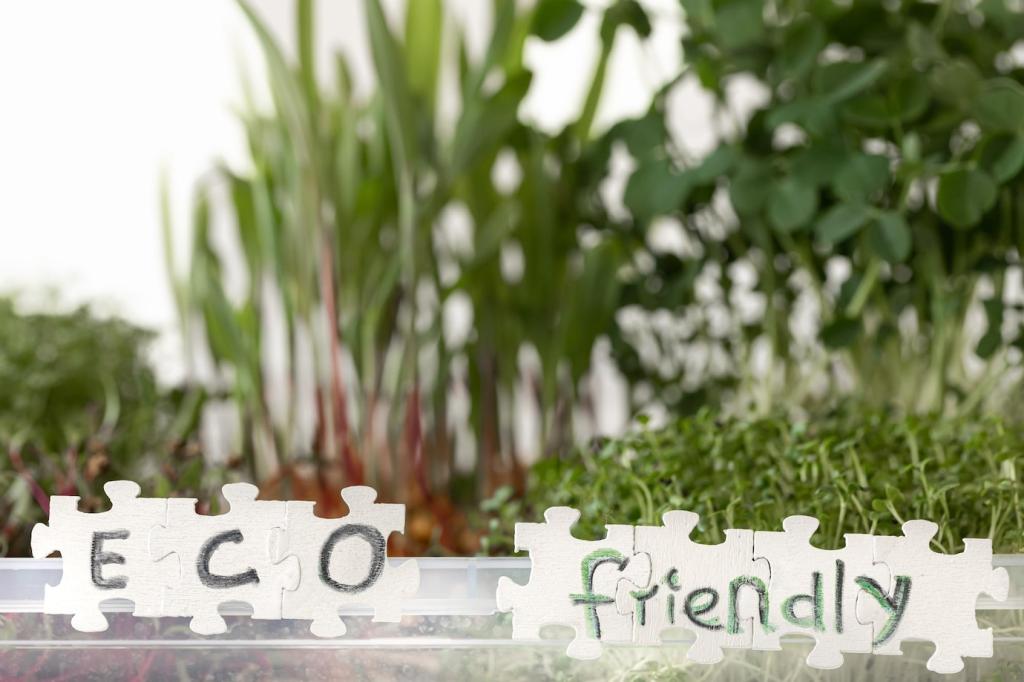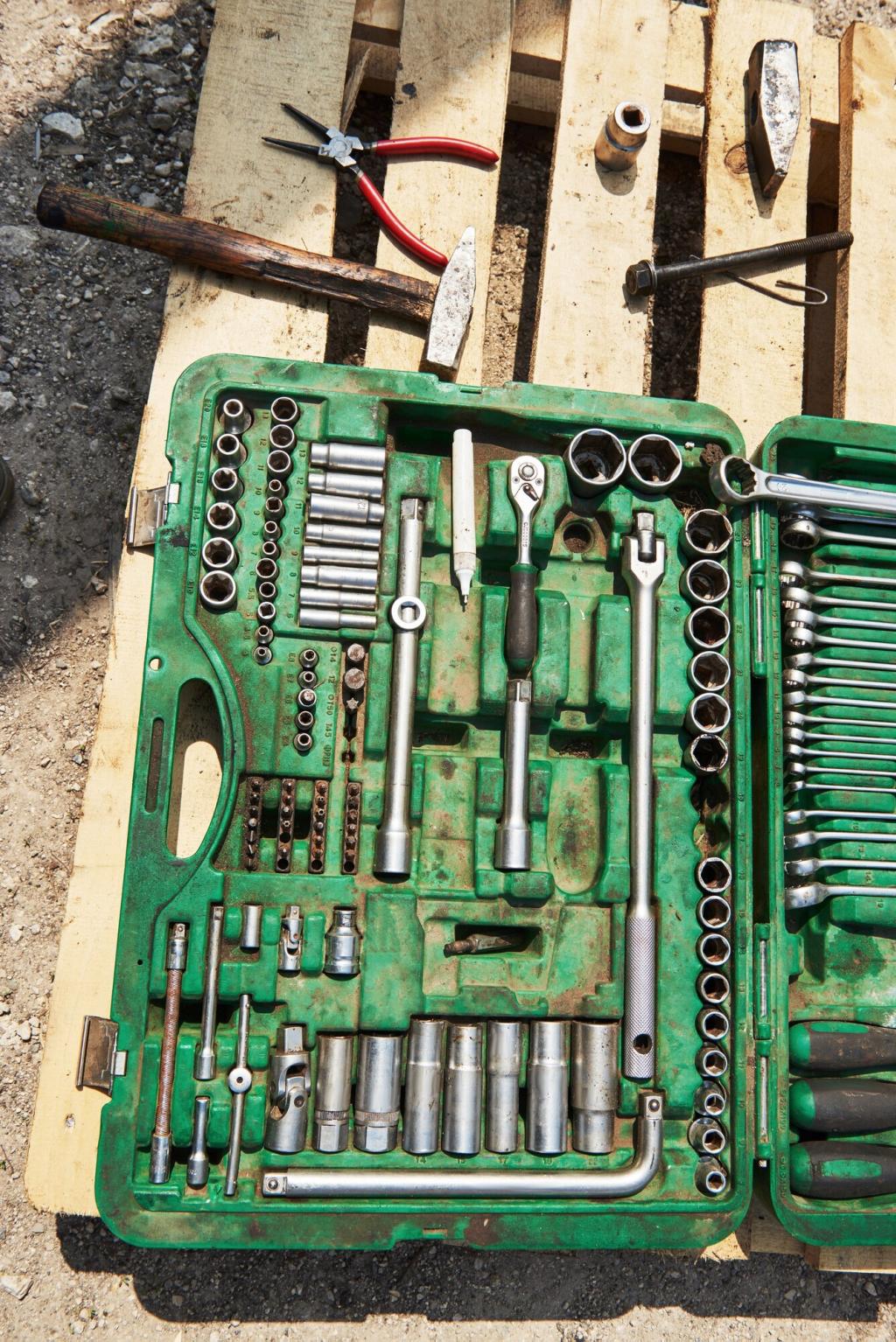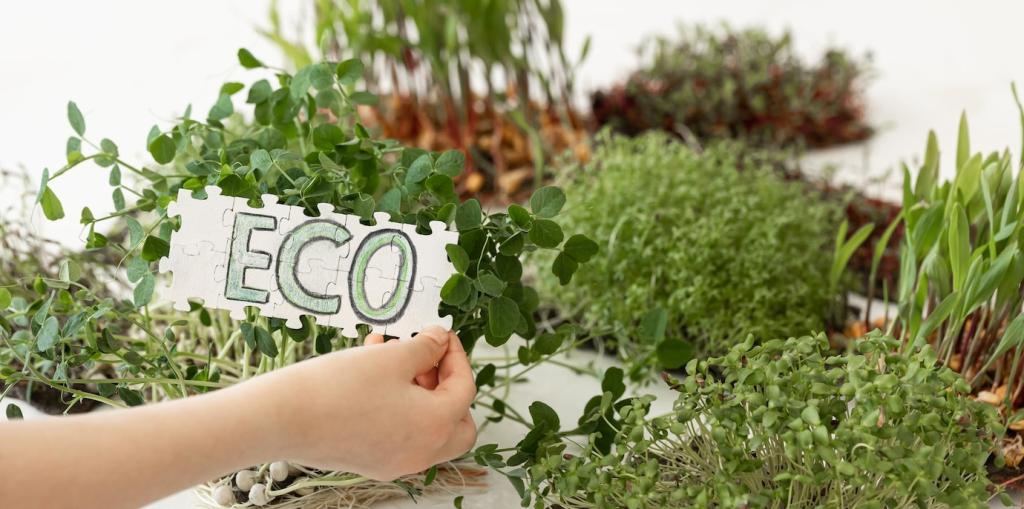Sustainable Upholstery Maintenance Methods
Chosen theme: Sustainable Upholstery Maintenance Methods. Welcome to a practical, planet-first guide that helps you care for sofas, chairs, and cushions without harsh chemicals or wasteful habits. Expect smart, low-impact routines, relatable stories, and science-backed tips you can use today. Love this topic? Subscribe and share your own eco wins to inspire the community.

Opt for fragrance-free, plant-based detergents with biodegradable surfactants and no optical brighteners. They rinse cleaner, reduce aquatic toxicity, and protect sensitive skin at home. Keep a short ingredient list, verify certifications where possible, and decant concentrates into reusable bottles to cut plastic waste dramatically.

Blotting Beats Scrubbing
When spills happen, grab a clean, white cloth and blot from the outside in. This tactic limits spreading and dye transfer. Add a few drops of gentle detergent to distilled water, dab sparingly, and follow with a dry cloth until moisture is lifted and the fabric feels merely damp.
Microfiber and Enzyme Support
A high-quality microfiber cloth mechanically lifts soil with tiny fiber hooks, reducing detergent use dramatically. For organic stains, an enzyme cleaner can break down residues effectively. Give enzymes time to work, then blot carefully, keeping fabrics only slightly moist to maintain shape and internal cushion integrity.
Low-Moisture Steam, Mindful Drying
If your fabric and code allow, a low-moisture steam pass can refresh fibers and lift light soils. Keep the nozzle moving and test first. Afterward, improve airflow with fans and open windows, avoiding heat guns that can set stains or warp synthetic fibers unexpectedly.

Natural Deodorizing and Allergen Reduction

Lightly sprinkle baking soda over cushions, let it rest for several hours, then vacuum thoroughly. Combine with cross-ventilation to move stale air outdoors. Sunshine can help with odor reduction, but keep delicate fabrics shaded to prevent fading and fiber dryness over repeated exposures.
Repair, Refresh, and Life Extension
Reinforce loose seams before they widen, stitch small tears with matching thread, and add discreet patches under cushions. Stabilizing early keeps foam in place and reduces stress on nearby stitches. Every minor fix delays reupholstery and preserves the embodied energy already in your furniture.


Repair, Refresh, and Life Extension
Rotate and flip cushions regularly to distribute wear. Add a thin muslin or felt underlay between cushion and deck to reduce friction. These simple habits maintain shape, improve perceived comfort, and reduce the need for intensive deep cleans that consume more water and energy overall.
Real-World Stain Stories
At a lively dinner, a splash landed on a linen loveseat. We blotted immediately, applied a tiny amount of plant-based detergent in distilled water, then blotted again. After air circulation overnight, the mark faded without ring formation, proving timing and minimalism matter more than brute force.
Real-World Stain Stories
A dog accident on a WS-coded cushion was treated with an enzyme cleaner, allowed to dwell, then blotted repeatedly. We finished with a light distilled-water pass and abundant airflow. Odor vanished by morning, and no heavy fragrances or harsh oxidizers were needed to mask the problem.
Real-World Stain Stories
Greasy fingerprints on an S-coded polyester blend responded to a two-step approach: cornstarch to absorb oils, then a fabric-safe solvent dabbed carefully. We kept contact brief, followed with a thorough vacuum, and restored the luster without pushing more chemical than absolutely necessary.
Your Sustainable Routine Planner
Weekly: quick HEPA vacuum on high-use zones. Monthly: full cushion rotation, spot checks, and zipper inspections. These short sessions prevent buildup and allow truly minimal product use throughout the year, keeping your environmental footprint and time commitment comfortably small.


Your Sustainable Routine Planner
Each season, do a deliberate pass: dry soil removal, targeted spot care, careful steaming if permitted, and thorough airing. Evaluate tools, refill concentrates, and repair loose threads. A calm, scheduled refresh beats panicked cleanups and delivers reliably better results with fewer inputs overall.
Circular Choices and Future-Proofing
When reupholstering, look for durable fabrics with third-party certifications and robust abrasion ratings. Favor timeless textures and colors to avoid frequent updates. Quality foams or natural latex, responsibly sourced wood, and low-VOC adhesives build a piece that cleans easily and lasts beautifully.
